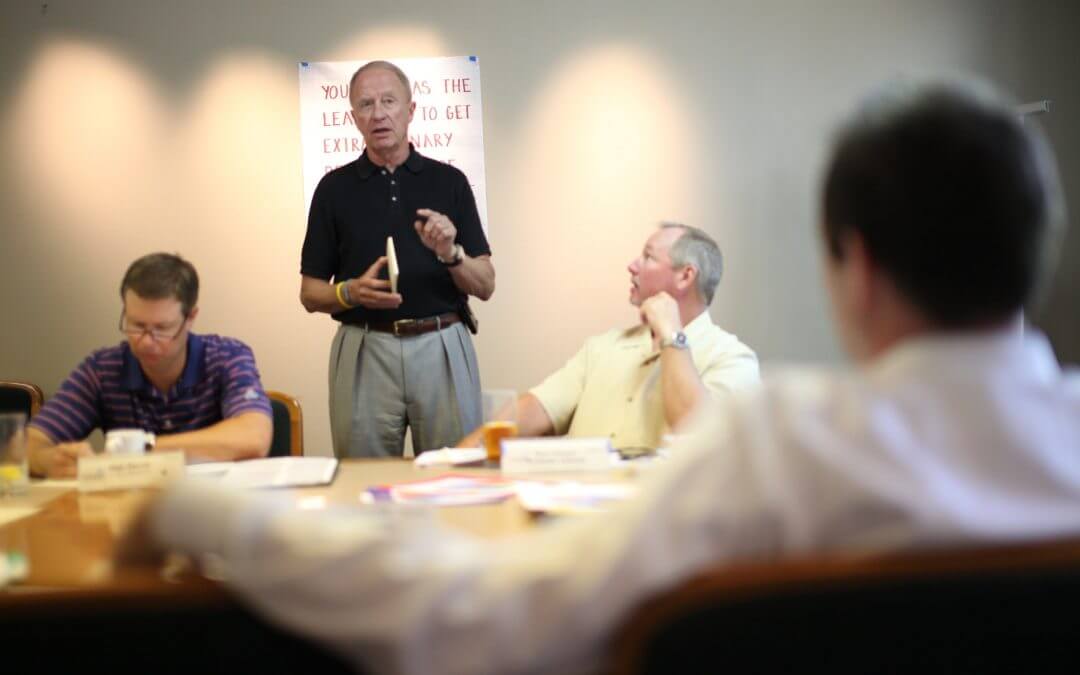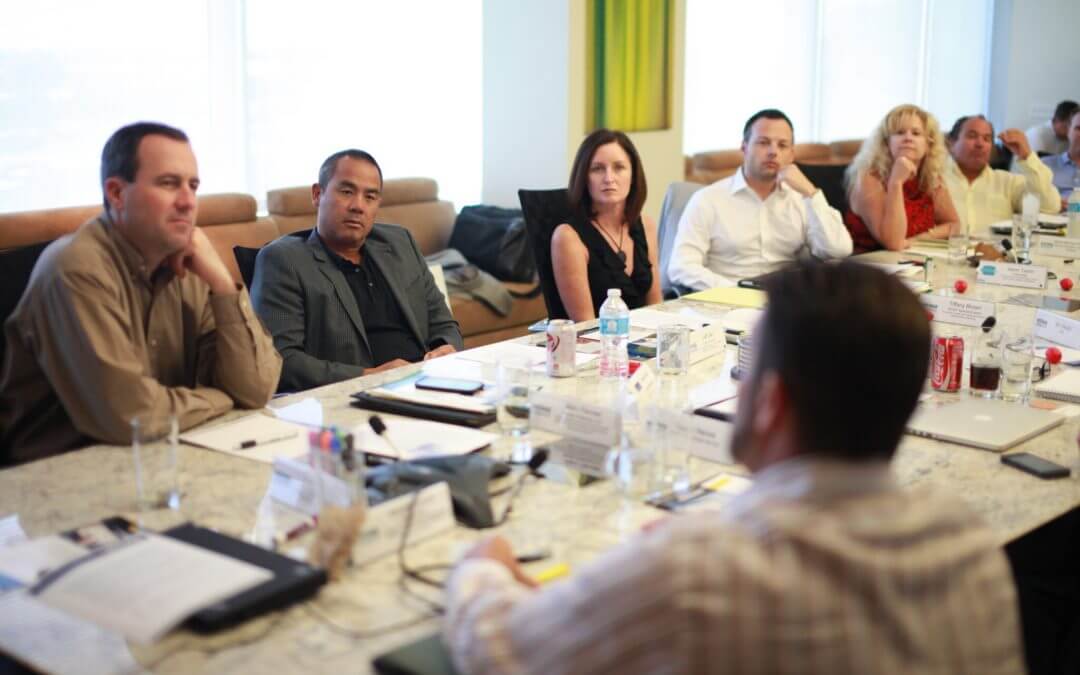Discover how to enhance decision-making in your organization by focusing on three crucial areas: solving the right problem, gathering all the available information, and understanding the intent. Learn to empower your team, foster a purpose-driven culture, and improve organizational clarity for better decision-making.

Do You Know Where Your Clients Are and What They Want?
Working on an event with a not for profit that I recently joined, I posed two questions, “Who is our audience?” and “What do they want?” I figured that these were easy questions and should quickly have responses; however, I was shocked, because they couldn’t be answered. How can you put on a successful event when you don’t know who you are marketing it to and what they really want. It made me think about how COVID is dramatically changing who our customers are, what they buy, and where.
We all know that a large amount of business has moved online, but many companies have yet to fully pivot to the point they can provide both information and delivery of their products and services in an online format that meets or exceeds their customers’ expectations. During a recent conversation with an executive of a training company, he was discussing how they working to move all their training online, but dealing with the challenges of how to deliver it in a way that the attendees got its full and would enjoy the experience. In my own business, I know many clients are getting tired of Zoom calls and want to return to in-person meetings, but only when it is safe. The challenge is how to make it interesting and keep people engaged?
If we look across the economy, many industries are finding the delivery of, and demand for, their products are changing. We all experienced the toilet paper shortage when the lockdown started. Why? From my understanding, the toilet manufacturers had most of their production set up to service commercial clients, the biggest users. However, with the lockdown all that commercial demand transferred to residential demand, which the manufacturers were not set up to produce or deliver. Likewise, with the liquor business were sales were transferred from restaurants to retail, again disrupting supply chains.
A recent article in Bloomberg noted that:
- SK-II beauty brand produced by Procter & Gamble Co. has seen sales decline by double digits. The reason, most sales were done at airport duty-free shops. With travel effectively on hold, the airports are empty and no one is buying. Thus the delivery needs to change.
- Mondelez International Inc. said that sales at its gum and candy division plunged 33% primarily due to falling sales of gum. Why? Gum consumption is very dependent on people being away from their homes. It is used to freshen breath for meetings or first dates – activities have been effectively halted for the moment. Thus, demand has evaporated.
- Starbucks announced that U.S. traffic slumped 52% from a year earlier; however, the average total bill, rose 25% over the same period. The reason was that shops were closed and people are not out, but when they are they are bundling orders for everyone at home. While bundling of orders makes the economics of delivery orders more attractive, it requires skill to allocate labor and tailor operations to ensure big-batch orders are fresh and hot.
- Molson Coors Beverage Co. reported revenue down 23% over last year. During the COVID period, party-friendly kegs sales disappeared; however, sales of 12-ounce cans exploded. The issue for Molson was getting enough aluminum for the cans to meet demand, which causes the fall in revenue. The company is working with suppliers to ensure the availability of the packaging materials needed to accommodate the stay-at-home lifestyle.
- As we all know U.S. tourism has been hit badly with COVID, but this is taking a toll on many retailers that have tourist-centric locations, e.g. Tiffanies and Macys on Fifth Avenue. However, it is also affecting stores like Carter’s Inc., the baby, and kids’ clothing chain that has seen tourist-centric locations revenue fall by 20% while non-tourist centric locations saw a rise in revenue of 15%. The issue for Carter’s is that tourist-centric locations account for about 20% of revenue. Thus the company is facing issues with delivery and is working closely with retailers like Wal-Mart, Target, and Amazon.com to help offset the decline.
Therefore, if you are experiencing either an increase or fall in revenue, spend time to understand why? Is it that customer tastes/requirements or channel delivery has changed and plan accordingly. As I have said before, I expect us to be living with COVID for at least a year, so be prepared for the long haul and recognize that many customers’ behavior changes may not revert when it is all over.
Recent Posts
Boosting Common Sense Decision-Making in Your Organization
Do You Understand Your Costs to Ensure Profitability?
You can only determine profitability when you know your costs. I’ve discussed before that you should price according to value, not hours. However, you still need to know your costs to understand the minimum pricing and how it is performing. Do you consider each jobs’ profitability when you price new jobs? Do you know what you should be charging to ensure you hit your profit targets? These discussions about a company’s profitability, and what measure drives profit, are critical for your organization.
Sunk Costs Are Just That, Sunk!
If you were starting your business today, what would you do differently? This thought-provoking question is a valuable exercise, especially when it brings up the idea of “sunk costs” and how they limit us. A sunk cost is a payment or investment that has already been made. Since it is unrecoverable no matter what, a sunk cost shouldn’t be factored into any future decisions. However, we’re all familiar with the sunk cost fallacy: behavior driven by a past expenditure that isn’t recoupable, regardless of future actions.
Do You REALLY Know Your Business Model?
Bringing clarity to your organization is a common theme on The Disruption! blog. Defining your business model is a worthwhile exercise for any leadership team. But how do you even begin to bring clarity into your operations? If you’re looking for a place to start, Josh Kaufman’s “Five Parts of Every Business” offers an excellent framework. Kaufman defines five parts of every business model that all flow into the next, breaking it down into Value Creation, Marketing, Sales, Value Delivery, and Finance.
Ideation! Harder Than It Sounds
Bringing in new ideas, thoughts, understanding, and logic is key as your organization faces the challenges of a changing environment. But when you do an ideation session in your organization… how does it go? For so many organizations, many times, after a few ideas have been thrown out and rejected, the thought process slows down very quickly, and a form of hopelessness takes over. How does your organization have better ideation? I’ve come across a new approach with a few teams lately.
Recruit, Recruit, Recruit!
An uptick in business has begun this quarter, and companies are rushing to hire to meet this surge in demand. What amazes me is how many are so unprepared to hire. Continual recruiting is key to the survival of a company. It isn’t the same thing as hiring—continuous recruiting is building a pipeline of people that you would hire if you needed to fill a position, or “A players” you would hire if they were available.
We All Need Clarity
If your organization is focused on obscurity over clarity, whether intentionally or not, your “A” player employees are vulnerable. There is a looming talent crunch. As we start to emerge from COVID, demand is increasing, and many are scrambling to fill positions to meet that demand. Headhunters and recruiters are soon going to be calling your key “A” employees. Have you been giving them a reason to stay?
Not Another **** Meeting
As Leonard Bernstein put it so well, “To achieve great things, two things are needed: a plan and not quite enough time.” Your meetings can be shorter, more fruitful, and engaging, with better outcomes for the organization, employees, and managers. It’s time to examine your meeting rhythms and how you set meeting agendas. This week, I break down daily, weekly, monthly, quarterly, annual, and individual meeting rhythms, with sample agendas for each.
Is Your Company Scalable?
Let’s start here: Why should your company be scalable at all? If your business is scalable, you have business freedom–freedom with time, money, and options. Many business leaders get stuck in the “owner’s trap”, where you need to do everything yourself. Sound familiar? If you want a scalable business that gives you freedom, you need to be intentional about what you sell, and how.
Are you ready for the Talent Crunch?
Companies are gearing up to hire. Unfortunately, many are competing within the same talent pool. Some experts are currently predicting a strong economic recovery starting in May or June. But as the economy booms, there is going to be fierce competition for talent. How will you fare in the looming talent crisis? Your organization should be creating a plan, now, so you can attract the talent you need in the year ahead.















